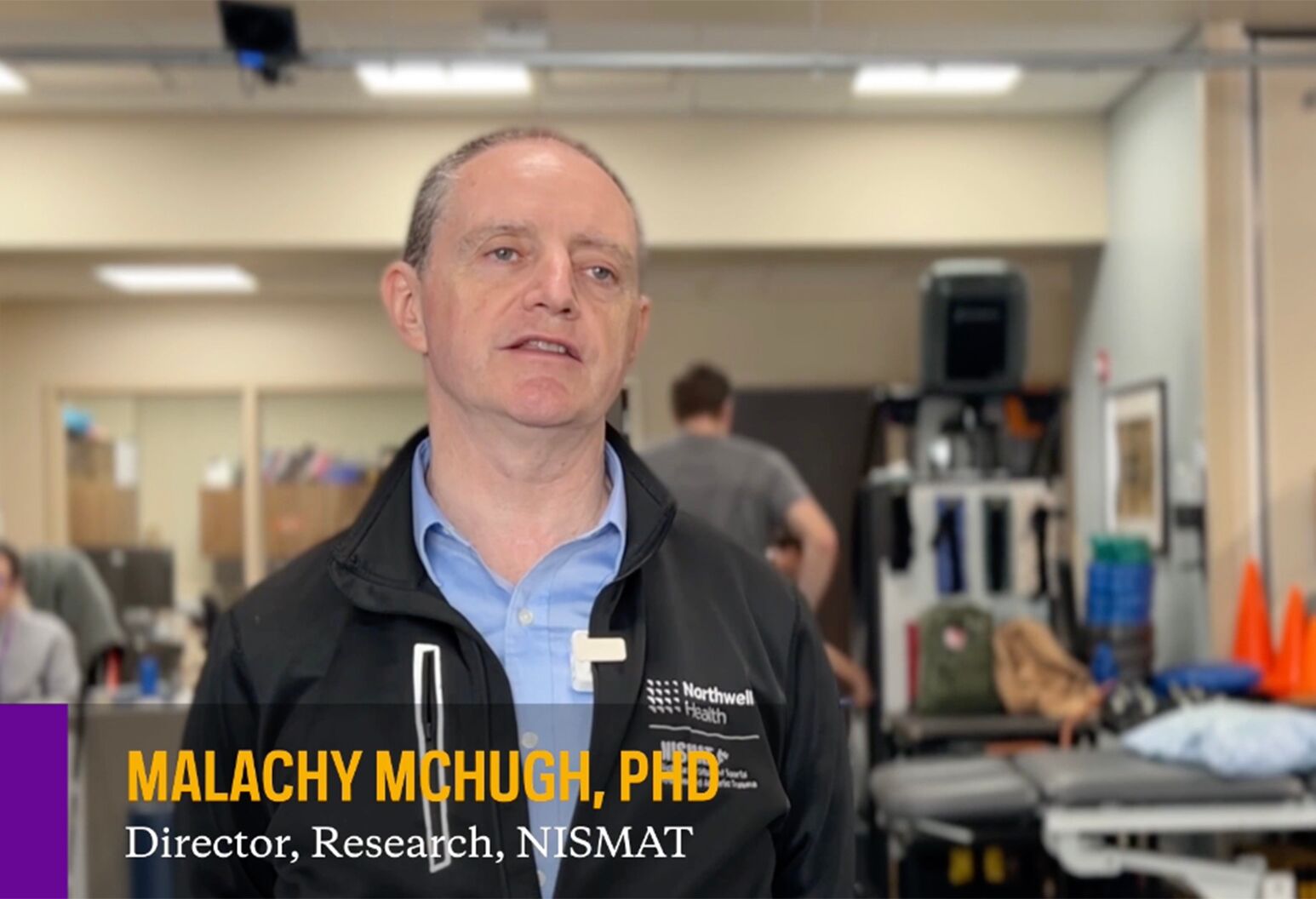Sports biomechanics assessments
Biomechanics is the study of how your body moves and how forces impact it. Your performance and risk of injury are determined by body segment and joint angle motion, as well as forces acting on and generated by your body.
The motion capture lab at the Nicholas Institute of Sports Medicine and Athletic Trauma (NISMAT) offers biomechanical assessments for:
- Baseball (pitching or hitting)
- Golf swing
- Jumping
Learn about our sports biomechanics assessments and the many services offered at Nicholas Institute of Sports Medicine and Athletic Trauma (NISMAT).
Golf biomechanics evaluation
NISMAT research has identified the specific physical and biomechanical attributes that make a good golf swing. This comprehensive evaluation, performed in conjunction with a TPI certified instructor, will determine whether you have the flexibility needed for an ideal golf swing, and the proper swing biomechanics to use elastic energy for maximal power.
The test involves trunk and hip flexibility assessment that relates flexibility to golf swing biomechanics:
- X-factor: how your pelvis and trunk (upper body) move separately
- Kinematic sequence: how energy moves from your pelvis to your trunk
- Ground reaction forces: how your weight shifts during the swing
What to expect
Your golf swing biomechanics will be directly assessed using state-of-the-art high speed cameras and force plates. The test includes a flexibility assessment performed by a TPI certified instructor, a golf swing biomechanics assessment, a swing analysis utilizing the Trackman system to collect insight on swing speed, launch data, etc., and a comprehensive report with exercises to improve flexibility and/or swing biomechanics, if deficiencies or limitations are identified.
The test takes about 75 minutes. Please note, research to date has only been done on males, and we are actively looking for female participants. For pricing and more information, email [email protected].
Biomechanical efficiency assessment
This is a force plate assessment of vertical jump performance for athletes involved in running, jumping, cutting and sprinting sports. All athletes know how to jump, but a force plate test shows us how effectively an athlete uses their musculoskeletal system to store and release elastic and contractile forces. The biomechanical efficiency of vertical jump performance varies greatly between athletes and provides specific information on how your training can be optimized.
What to expect
You will perform a vertical jump with your hands on your hips to avoid any arm swing. A natural jump involves a countermovement where you lower your body before an explosive upward movement. You will perform 3 to 4 practice trials followed by three maximal jumps with 30 seconds of rest between. We assess biomechanical efficiency by analyzing the unweighting, braking and propulsive phases of the jump.
You’ll receive a report assessing your performance and biomechanical efficiency with directions for improvement. The best athletes jump high with good biomechanical efficiency. But some athletes jump high with poor biomechanics. These athletes need to develop elastic energy. Some athletes might perform poorly (not jump high) but be biomechanically efficient. These athletes will need to focus their training on strength and power.
For more information, email [email protected].

